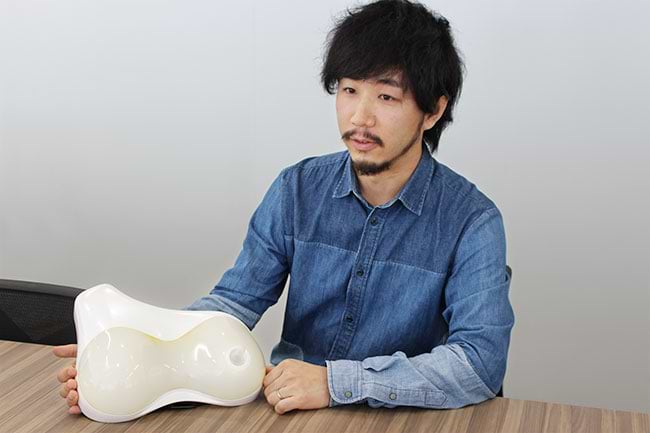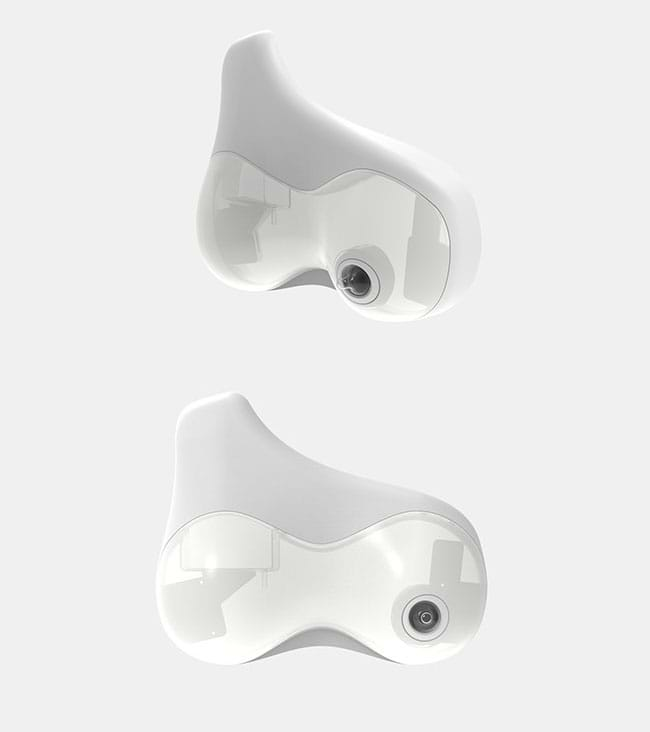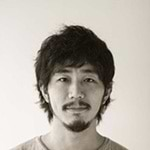Held in the spring of each year in the United States, South by Southwest (SXSW) is a conglomerate of music, film, interactive media festivals and conferences. Large numbers of companies and creatives from around the world participate in the events and talk sessions, and exhibit products and works that offer a glimpse of the future. New technologies and business ideas are showcased at the SXSW Interactive Festival, which is well known for drawing attention to newly launched services-including some that went on to become global successes, like Twitter and Airbnb. At this year’s festival, as well, all kinds of new business seeds were put on display.
Dentsu exhibited four different projects in the festival’s trade show this year under the development concept Pointless Brings Progress, which we featured in the first installment of this series. In the next four articles of the series, we will give the spotlight to the creatives who oversaw the development and production of each exhibited project.
For this installment, we met with Osamu Takahashi, an art director working in Dentsu’s Creative Planning Division 1. He was in charge of exhibiting the Father’s Nursing Assistant, a device that allows a father to nurse his infant. We talked with him about how this product was developed from his original idea, what he regards as important as a creative, and his outlook for the future.

I learned about who puts the baby to sleep after observing my sister’s family
Please tell us about the background behind the development of the Father’s Nursing Assistant.
Our goal was to make a wearable device that would allow a father to nurse and lull his baby to sleep in the same way as a mother. Shaped like a woman’s breasts and equipped with an internal milk tank, the product comes quite close to recreating an infant’s experience of drinking milk from his or her mother’s breast.
I talked with pediatricians during the product development stage, and discovered that babies have a habit of holding on to their mother’s breast when being breastfed. During that time, the softness and warmth of the breast along with the mother’s heartbeat give the infant a sense of security. Indeed, this is part of the process of forming an attachment with the mother. With that in mind, we designed the product to be as close as possible to the actual breastfeeding experience, paying particular attention to the feel of the materials. We equipped the nipple component with a sensor, which detects when the baby is sucking. The sensor can also be connected to an app to generate data.

The reason why I wanted to develop this product was simple. My older sister has a baby, and while I was spending time with her family, I noticed that when her child started crying, she was usually able to soothe and put her baby to sleep. Almost as soon as my sister started breastfeeding, the baby stopped crying and, before I knew it, fell asleep. It was wondrous to watch, and I thought it would be fantastic if a father could do the same thing. That is when I started getting the basic idea for the product.
From then on, I checked some research about parenting, and, as expected, I confirmed that nursing and lulling infants to sleep are overwhelmingly handled by mothers. Moreover, breastfeeding is not only done to give milk, but also to make the baby feel secure and sleepy, so it is an effective way to put a baby to sleep. Indeed, it is very common for mothers to put their babies to sleep by breastfeeding them. Conversely, there are many cases of babies being unable to fall asleep after they become over-reliant on breastfeeding while sleeping. With that in mind, I thought that the mother’s burden could be reduced by half if more people could help her with nursing duties by using some kind of device.
I also came across another very interesting research finding. Apparently, the average amount of sleep time of Japanese babies is the lowest in the world*. Various reasons have been given to explain this, but among the main reasons, babies are often woken up at night by the sound of someone coming home late. That is more prevalent in Japan because the working hours of both parents are longer compared with those of other countries, and the size of Japanese residences is comparatively small. Therefore, I thought that our product could become useful for helping to solve this issue.
* Source: Cross-cultural differences in infant and toddler sleep by J. Mindell et al. (Sleep Medicine Vol. 11, 2010)
I hope to make things that will become widely used.
What ideas and interests of your own were reflected in the development of the Father’s Nursing Assistant?
With this product, I think we can not only improve the lives of women but also enhance family life for men. If a father can assist with nursing care, he can help his wife and, most importantly, greatly benefit their child. We are beginning to see childcare leave and other such systems expanded and broadened in Japan, but I would like to see devices that can support childcare by men in more tangible ways.
The Father’s Nursing Assistant can be used by other people besides the baby’s father. For example, the grandfather or grandmother can use it when they visit their grandchild. As an alternative means for giving milk to infants, the product can also be helpful for mothers who experience difficulties with breastfeeding. I believe there are women who experience such difficulties or are simply unable to do it. I want to solve that problem with some kind of device that allows anyone to nurse a baby. In a sense, such a device is like a step ladder that enables a short person to reach something a tall person can already reach high up on a shelf. With that desire, I hoped to create something that is easy to use and can help people overcome challenges.
Giving fathers the ability to nurse and put their children to sleep was the starting point for this project. We also wanted to deal with latent needs in everyday life as well as issues that, while not always in the headlines, are actually experienced by a lot of people. To breathe life into the idea for the product, we asked ourselves whether it would remain valuable over many years after being put on the market, and whether the value retained over so many years is inherent in the device itself. That is to say, we were aiming to create something that consumers would naturally accept and always expect to be available.
As advertising professionals, we need to create things that have an immediate impact. On the other hand, ideally, I want the things I am involved in to be readily available to people, especially those outside of the advertising industry, such as my hometown friends and my grandparents. Deep down, I guess, I secretly want them to realize that the creator of such a thing was me! Based on that approach, I hope to make products that eventually become commonplace.

If we discover big problems, we can naturally create products to solve them
What led you to adopt such an approach?
A number of years ago, I had the opportunity to make new souvenirs and promotional goods for a community, and it was a very important experience for me. After all these years, the souvenirs and goods that I helped create are still sold in the town’s train station, event hall, and tourist gift shops. I am really happy about that, because the things I was involved in are now expected to be available in that area. I came to realize the value of contributing to the community, even in a small way, and bringing some pleasure to people’s lives.
In order to create a product that people widely accept, however, one must search deeply for the product’s purpose from the start and clearly define a mission. With that in mind, I begin my own work by asking whether a product would be beneficial and useful if it was available, based on my own everyday life and experience. My own awareness and experience is limited, of course, so I also realize the need to fully consider whether the product would actually benefit large numbers of people and be useful for society. For the Father’s Nursing Assistant, I began from my own experience with my sister’s family. After that, I talked with pediatricians and closely examined some academic research on parenting for the purpose of confirming that there was, without a doubt, a broad need for the product.
Over the course of carrying out that approach, I found research showing that the burden of feeding and putting infants to sleep has mostly fallen on women. Besides that, I eventually discovered new findings and a serious issue: Japanese babies have the least amount of sleep time in the world. If we discover such big problems, simply thinking of solutions should naturally lead us to ideas for useful products.
Products should help eliminate problems experienced by people and also bring them benefits. I want to be involved in the creation of such products in the future.

Osamu Takahashi
Art Director
Creative Planning Division 1
